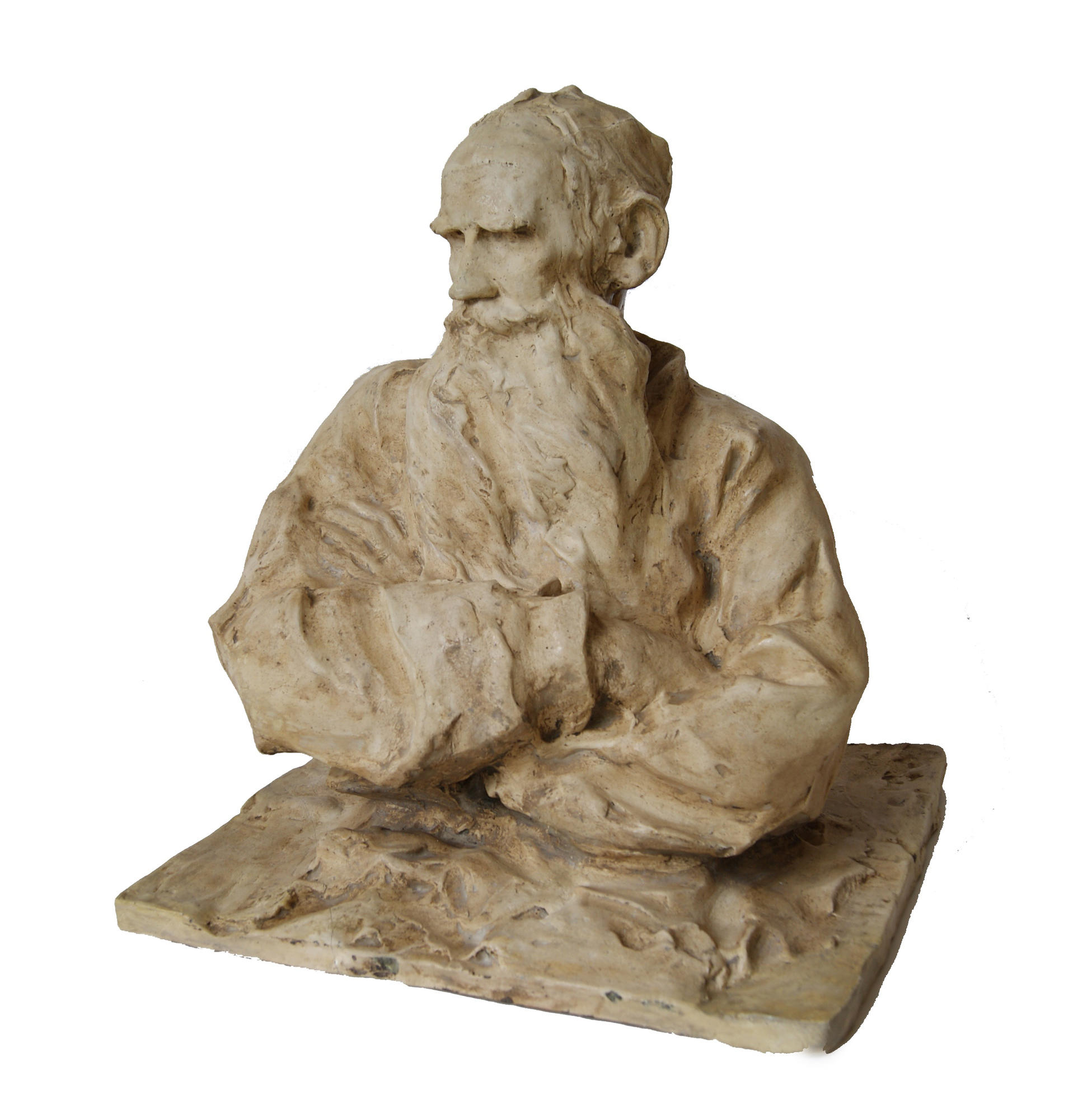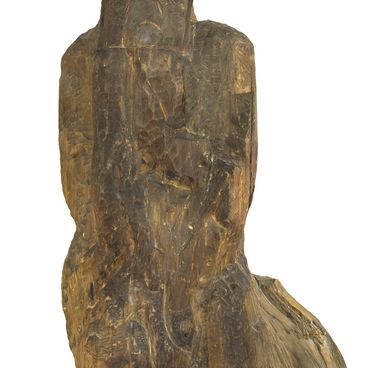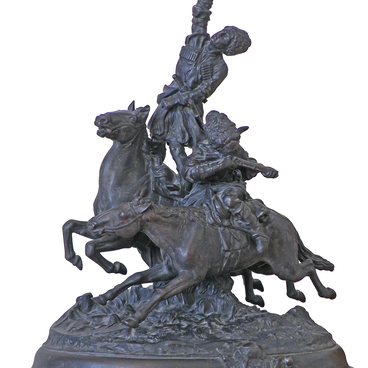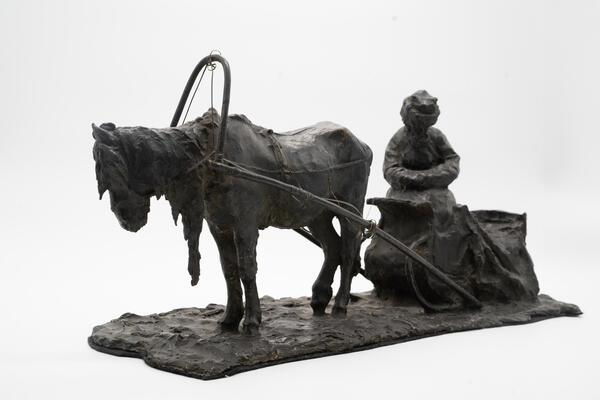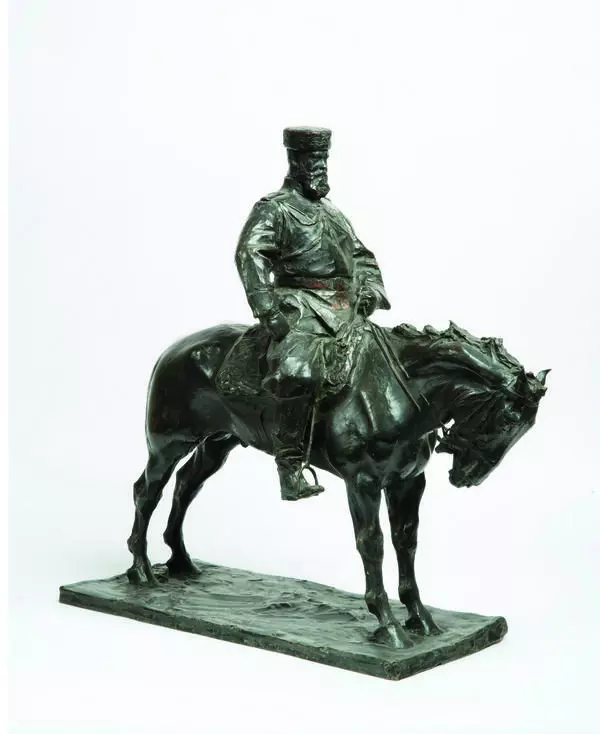Paolo Trubetskoy (1866-1938) was born into the family of a Russian prince and an American woman who lived and brought up their children in Italy. In the history of art, he became the symbol of creative freedom and independence from any imposed requirements. Trubetskoy did not receive comprehensive education in arts, but his rare talent allowed him to find self-fulfillment in various genres: from small works of plastic art to monumental sculpture. Thanks to the originality of his works, he achieved great success among progressive artists of the 19th century.
Portrait of L.N. Tolstoy
Creation period
1899
Dimensions
35,5х31х29 см cm
Technique
Tinted plaster
Collection
Exhibition
1
Open in app#1
Pavel Trubetskoy
Portrait of L.N. Tolstoy
#2
#7
In 1897, the sculptor came to Russia and soon made friends with Leo Tolstoy. He often visited him in his mansion in Yasnaya Polyana and in Moscow.
#3
Tolstoy’s secretary, Valentin Bulgakov, recalled that “Paolo Trubetskoy was one of Tolstoy”s favorites… Tolstoy loved him for his open and sincere soul, honesty and hatred of conventionalities, his love for animals and his vegetarianism”.
#4
As you can see from this description, they had much in common, despite the fact that Trubetskoy did not read any books and prided himself on that.
During the years of their friendship, the sculptor created various portraits of Tolstoy. The collection of Dagestan Museum of Fine Arts features a plaster portrait created in 1899. It was made by Trubetskoy from life in Yasnaya Polyana where you can still find its version in bronze. The author tried to capture Tolstoy’s wisdom and sincerity, as well as the depth of his inner self. This work is characterized by deep interest for the psychological aspect: the sculptor’s interest was never limited to just the facial expression of his models.
During the years of their friendship, the sculptor created various portraits of Tolstoy. The collection of Dagestan Museum of Fine Arts features a plaster portrait created in 1899. It was made by Trubetskoy from life in Yasnaya Polyana where you can still find its version in bronze. The author tried to capture Tolstoy’s wisdom and sincerity, as well as the depth of his inner self. This work is characterized by deep interest for the psychological aspect: the sculptor’s interest was never limited to just the facial expression of his models.
#5
Trubetskoy’s style was shaped by Italian art that he studied in his childhood and youth. His major influence was his first teacher, Giuseppe Grandi, who taught him the bozzetto technique. Bozzetto is a somewhat loose sketch from nature that does not need additional polishing due to its similarity to the original. That was how Trubetskoy worked on Tolstoy’s portrait. In this work, you can also observe another technique that was important for the artist, that of raw molding. Due to its use, there are textured strokes on the surface of the sculpture. Trubetskoy tried to avoid smooth surfaces in order to capture the innermost characteristics of the model’s soul.
Trubetskoy was convinced that ‘a portrait should not be a copy’. His ground-breaking ideas stirred the displeasure of the Saint Petersburg Academy of Arts that did not recognize any departure from the classical canons and called the sculptor innovative works ‘shoddy’. His works radically differed from the latest academic sculptures, and they made it into history.
Trubetskoy was convinced that ‘a portrait should not be a copy’. His ground-breaking ideas stirred the displeasure of the Saint Petersburg Academy of Arts that did not recognize any departure from the classical canons and called the sculptor innovative works ‘shoddy’. His works radically differed from the latest academic sculptures, and they made it into history.
#8
P. S. Gamzatova Dagestan Museum
read morehide
00:00
00:00
1x
Portrait of L.N. Tolstoy
Creation period
1899
Dimensions
35,5х31х29 см cm
Technique
Tinted plaster
Collection
Exhibition
1
Open in app
Share
